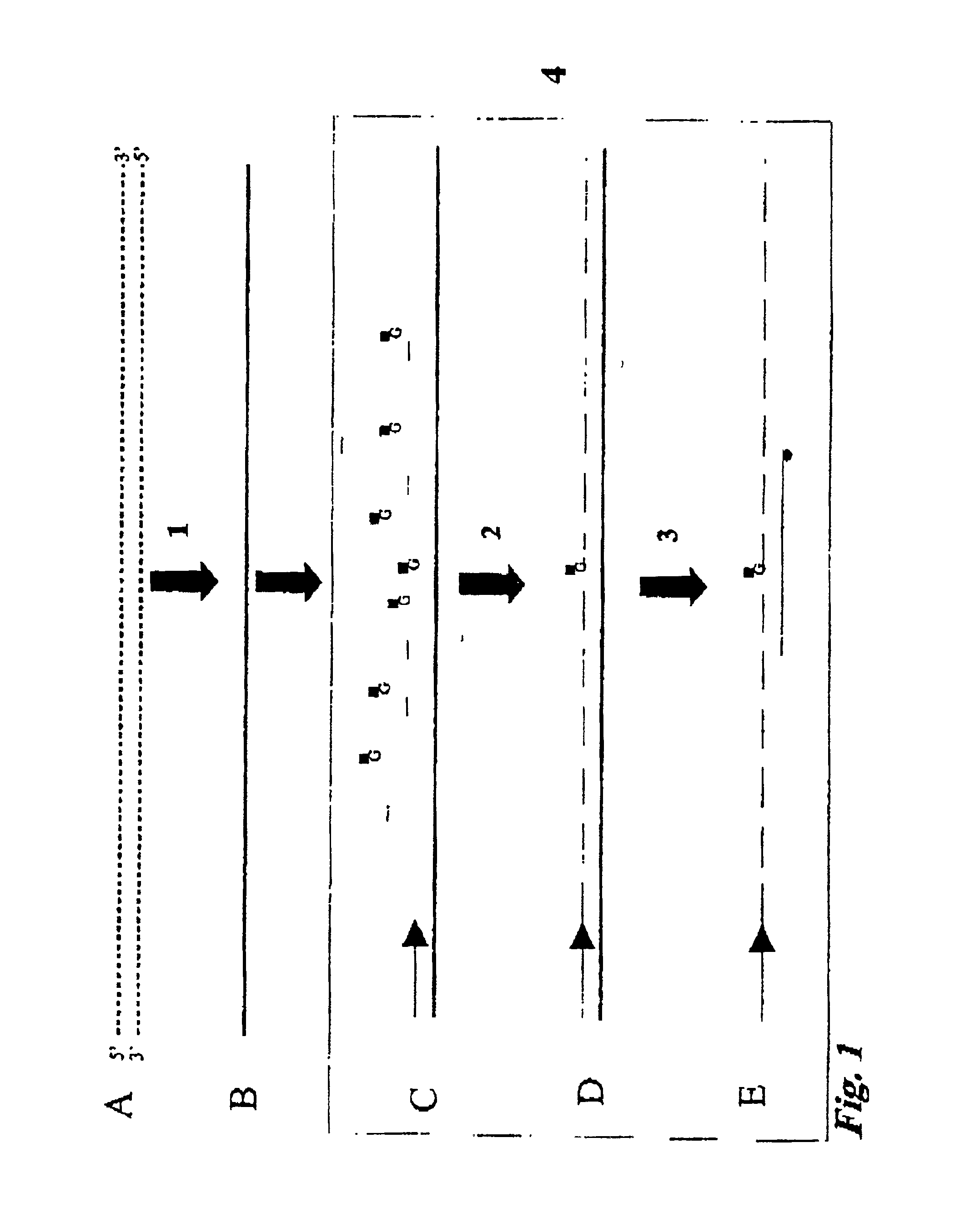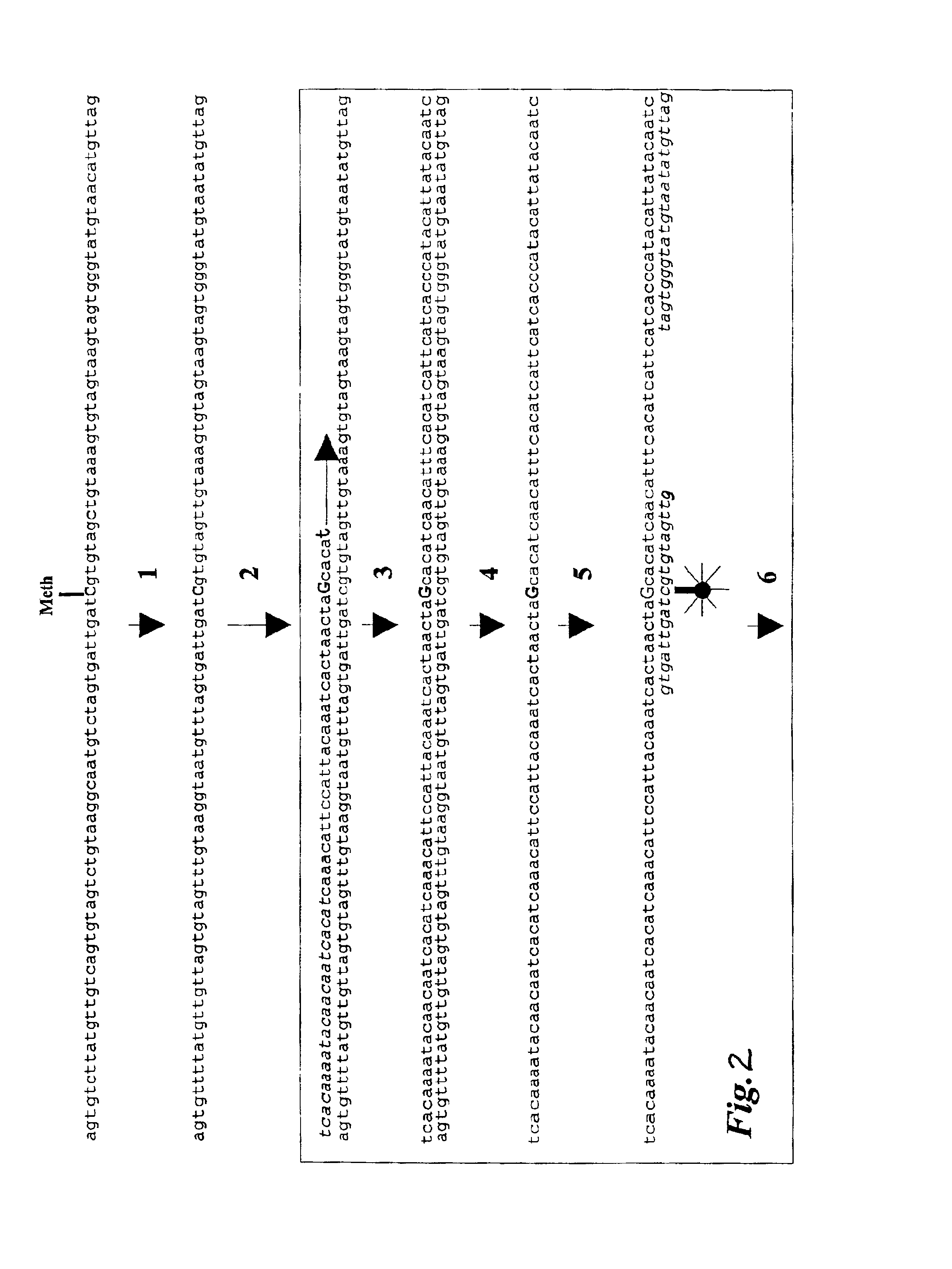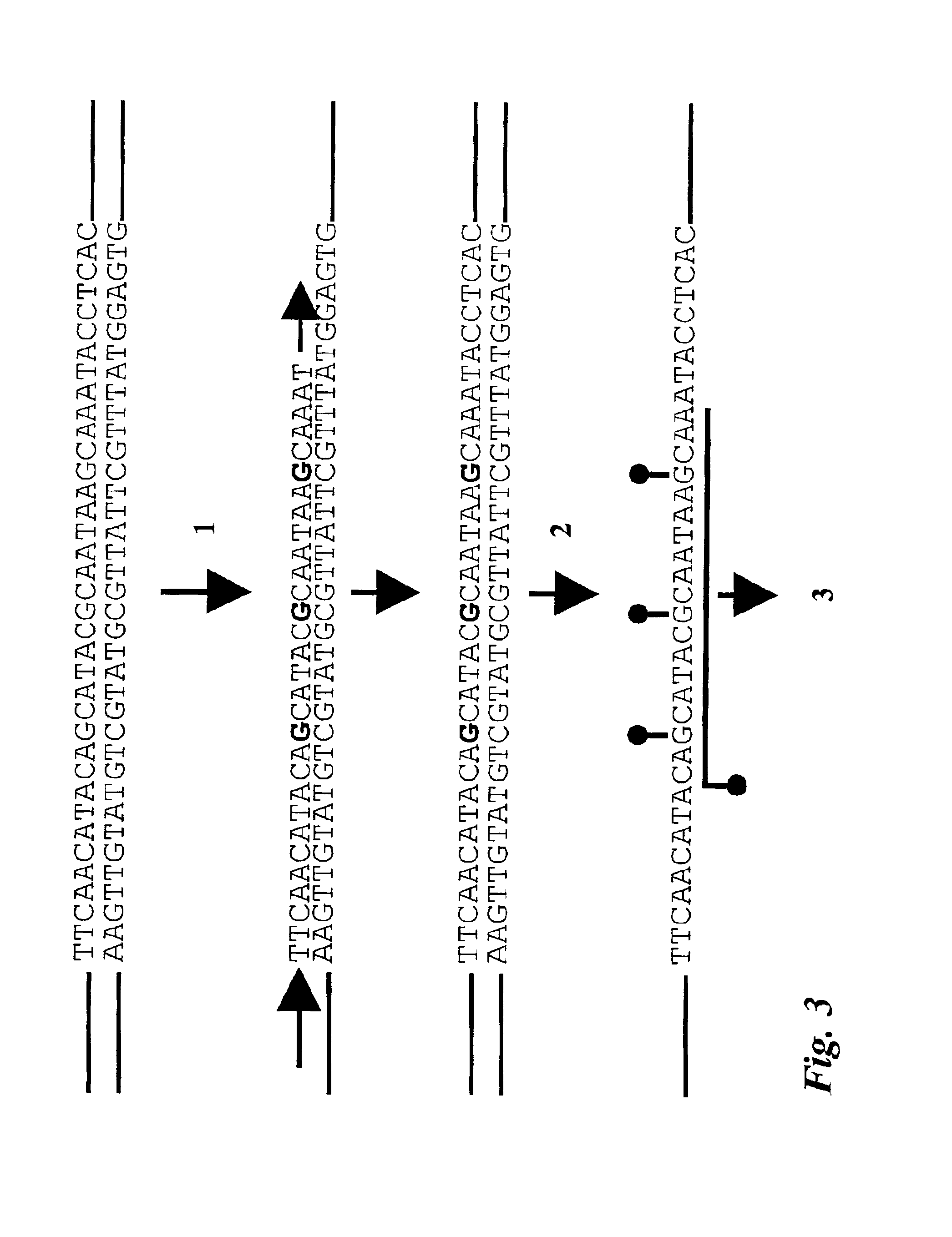Quantitative methylation detection in DNA samples
a methylation detection and quantitative technology, applied in the field of nucleic acids analysis, can solve the problems of unmodified 5-methylcytosine under these conditions, unable to address a significant aspect of genetic disorders, and more limited analysis of the regulatory mechanisms associated with gene control, and achieve the effect of high throughpu
- Summary
- Abstract
- Description
- Claims
- Application Information
AI Technical Summary
Benefits of technology
Problems solved by technology
Method used
Image
Examples
Embodiment Construction
[0040]According to the present invention there is provided a method for the cytosine methylation detection in a DNA sample, comprising the following steps:[0041]a) a genomic DNA sample is treated in a manner capable of distinguishing methylated from unmethylated cytosine bases;[0042]b) the pre-treated DNA is amplified using at least one oligonucleotide primer, a polymerase and a set of nucleotides of which at least one is marked with a first type of label;[0043]c) a sequence-specific oligonucleotide or oligomer probe is hybridized to the amplification product and a FRET occurs if the oligonucleotide or oligomer probe, marked with a second type of label, binds in close proximity to one of the labeled nucleotides that was incorporated into the amplification product;[0044]d) the level of methylation of the sample is determined by the level of interaction between said first and second type of label.
[0045]According to the invention it is preferred that the first type of label is a donor ...
PUM
| Property | Measurement | Unit |
|---|---|---|
| temperatures | aaaaa | aaaaa |
| fluorescence resonance energy transfer | aaaaa | aaaaa |
| fluorescent | aaaaa | aaaaa |
Abstract
Description
Claims
Application Information
 Login to View More
Login to View More - R&D
- Intellectual Property
- Life Sciences
- Materials
- Tech Scout
- Unparalleled Data Quality
- Higher Quality Content
- 60% Fewer Hallucinations
Browse by: Latest US Patents, China's latest patents, Technical Efficacy Thesaurus, Application Domain, Technology Topic, Popular Technical Reports.
© 2025 PatSnap. All rights reserved.Legal|Privacy policy|Modern Slavery Act Transparency Statement|Sitemap|About US| Contact US: help@patsnap.com



